25 Most Influential Books in History (Historiography) 2010–2020

Historiography encompasses both the primary-level study and written reconstruction of history—which may be defined as “what happened in the past”—and the meta-level history of how human attitudes towards the study of history have themselves changed through time, as well as the methods and techniques involved in it. Though we set out to identify the most influential books in the history discipline, historiography proved the more encompassing and informative terminology.
With all this in mind, we have compiled a list of the most influential books from the past decade (2010–2020) in historiography. We have assigned an objective measure of “influence” to each book on the basis of the number of references it has received in both the academic literature and the popular media.
Note that our list does not necessarily represent the most popular historiography books overall published during the past ten years, nor is it a list of historiography bestsellers during that time frame—for several reasons.
For one thing, we have excluded historiography textbooks and technical reference works, as well as sacred texts and fictional works which may contain philosophy-related material.
Many of the works on this list are quite old. Nevertheless, ours is not a list of the most influential historiography books of all time. That list would have a very different look and feel to it.
Rather, our list provides you with the 25 books in the field of historiography that have had the greatest combined academic and popular impact over the past decade.
If you’re interested in dedicating your college education to these and other essential history texts, check out The Best Colleges & Universities for a Bachelor’s in History.
Otherwise, read on for a look at The 25 Most Influential Books in History.
25 Most Influential Books in History
1.Records of the Grand Historian
Records of the Grand Historian: Qin Dynasty
Records of the Grand Historian: Han Dynasty I
Records of the Grand Historian: Han Dynasty II
By: Sima Tan and Sima Qian, c. 135 BC


Chinese civilization is very ancient—more than 4,000 years old. However, systematic and reliable historical narratives only begin during the Han dynasty (202 BC–220 AD). The Shiji, commonly known in English as the Records of the Grand Historian, is the earliest such work. Composed by Sima Qian in the second half of the first century BC on the basis of research carried out by his father, Sima Tan, the Shiji comprises a detailed account of the Qin Dynasty (221–206 BC) and the early part of the Han. Portions of this large work (in 130 chapters) have been translated into English several times. Perhaps the most popular and easily available version is by the distinguished Sinologist and translator, Burton Watson, in three volumes covering 90 chapters. The Watson translation was originally published in 1961; a Revised Edition was published in 1993.
2.The Life of Flavius Josephus
By: Titus Flavius Josephus, c. 99 AD


This book was originally composed in Greek as Iōsēphou bios (Life of Josephus). It is an autobiography written by a very important Jewish historian of the early Roman empire, Yosef ben Matityahu (Joseph, son of Matthew), better known by his Romanized name, Titus Flavius Josephus (c. 30–c. 100 AD). Josephus was born in Jerusalem into a priestly Jewish family and fought against the Romans in the early stages of the Jewish War (66–73 AD), but went over to the Roman side led by the general Vespasian, who would go on to become emperor. Josephus eventually became a trusted aide of Vespasian’s son (and future-emperor in his own right), Titus. By the end of his remarkable career, Josephus had become a Roman citizen and a man of property and social standing. He is best-known for his two principal historical works, The Jewish War (see #10 below), written around 75 AD, and The Antiquities of the Jews (see #8 below), from about 94 AD. The Life may have been originally published as an addendum to The Antiquities and includes a defense of the author’s historical claims against his critics. In 1602, a complete set of Josephus’s works, including The Life, was published in English by the Elizabethan man-of-letters, Thomas Lodge. However, a superior edition of the collected works was published in 1737 by William Whiston (1667–1752), an Anglican priest, theologian, mathematician, and early popularizer of Isaac Newton. Whiston’s is still the standard English translation of Josephus.
3.The Secret History of the Mongols: The Origin of Chinghis Khan
By: Anonymus, After 1227 AD
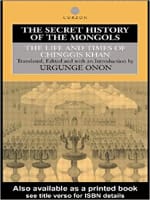

This anonymous text traces the ancestry and career of Genghis Khan (c. 1158–1227), the founder of the Mongol Empire, which at its greatest extent stretched from the Pacific Ocean to the edge of Europe (along a north-south frontier reaching from St. Petersburg to the Carpathian Mountains and the Danube). The first chapter recounts Genghis Khan’s ancestry, beginning with the mythological origin of the Mongol people—in the mating of a gray wolf with a doe. The rest of the book provides a detailed history (with some legend mixed in) of the Great Khan’s life and military career. The dating of the text is uncertain, but as the last chapter deals with the Khan’s death, 1227 may serve as a terminus a quo. The Secret History is the first literary text written in the Mongolian language. It is thought to have been originally composed in the Mongolian script by an unknown member of the imperial court. However, in the surviving manuscripts, the original text has been transliterated into Chinese characters or else translated into Chinese. This work was unknown in the West until it was published in 1872 by a Russian monk who had discovered a manuscript containing one of the Chinese transcriptions. The Mongolian scholar Baavuday Tsend Gun (1875–1932) reconstructed the original text in Mongol script from this manuscript and published his results 1915. It is this version of the text that forms the basis of all modern translations into Western languages. Several English translations are available, the most accessible and easily available of which is probably the one first published by Paul Kahn in 1984. An Expanded Edition was published in 1998 and reprinted in 2005.
4.The Oxford History of the British Empire
Volume I: The Origins of Empire, Nicholas Canny, editor, 1998
Volume II: The Eighteenth Century, P.J. Marshall, editor, 1998
Volume III: The Nineteenth Century, By: Andrew Porter, editor, 1999
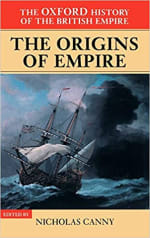

This state-of-the-art collection of essays, in three volumes, details the manifold ways in which England—later “Great Britain”—became one of the world’s foremost naval powers, allowing it to mount voyages of exploration, to establish trade relations, and ultimately to plant colonial administrations and/or settler states in foreign lands all around the globe. As recently as the 1950s, the color pink on globes and atlases (representing British colonies and Commonwealth countries) appeared on all the world’s continents. From this fact comes the old saying, “The sun never sets on the British flag.” For anyone interested in learning more about this fascinating—if morally problematic—history, this authoritative collection is one of the very best places to start.
5.The Alexandrian War
By: Anonymus, c. 40 BC


The Alexandrian War was an episode in the Roman civil war. The popular military leader Julius Caesar had been ruling in a Triumvirate together with Crassus and Pompey. The Senate became fearful of Caesar’s growing power as a champion of the common people and attempted to strip him of command of his armies. In retaliation, Caesar “crossed the Rubicon” (saying “alea iacta est”—“the die is cast”) and brought his legions into Rome itself, against traditional Roman norms. Pompey fled the capital and mounted his own army in southern Italy, unleashing the civil war. After Caesar’s victory over Pompey’s forces at Pharsalus, in Greece, Pompey fled to Egypt, where he was murdered by local Roman officials loyal to Caesar. When local Roman Senate allies mounted a new army to oppose Caesar in Egypt, the latter besieged and defeated their forces at Alexandria in 47 BC. This anonymous Latin account of these events, titled De Bello Alexandrino, has been included in the Landmark series of new editions and English translations of ancient historians, in the 2019 volume of works by and about Julius Caesar’s military campaigns.
6.The Antiquities of the Jews
By: Titus Flavius Josephus, c. 94 AD


The Antiquities of the Jews (Ioudaïkē archaiologia, in the original Greek) is a vast history of the Jewish people in 20 volumes written by the Hellenized and Romanized Jewish author known as Titus Flavius Josephus, whose birth name was Josef ben Matityahu (for more on Josephus, see # 2 above). The first ten books follow the narrative contained in the historical books of the Hebrew bible (Tanakh), while the last ten books take the story of the Jewish people up to Josephus’s own times. This book—especially its second half—represents a treasure house of historical information, much of which is not available to modern scholars from any other source. The English translation made in 1737 by the learned English clergyman William Whiston remains standard to this day (for more on Whiston and the translation history of the Antiquities and Josephus’s other texts, see #2 above).
7.The Muqaddimah: An Introduction to History
Volume One (Chapter I through Chapter III, section 31)
Volume Two (Chapter III, section 32, through Chapter VI, section 11)
Volume Three (Chapter VI, sections 12–59)
By: Ibn Khaldūn, 1377
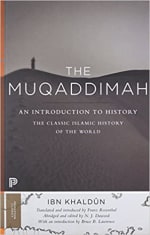

Abū Zayd ’Abd ar-Raḥmān ibn Muḥammad ibn Khaldūn al-Ḥaḍramī, commonly known as Ibn Khaldūn (1332–1406), was a Tunisian-born scholar who did pioneering work in the intellectual disciplines now known as historiography, sociology, economics, demography, and others. His extensive travels throughout the Maghreb, southern Spain, Egypt, the Near East, and western Arabia during the third quarter of the fourteenth century AD form the empirical basis for his observations in these fields. This comprises the bulk of his monumental, multi-volume work, entitled Muqaddimah in Arabic, which means “Introduction” or “Prologue.” Originally, Ibn Khaldūn conceived of The Muqaddimah as the introductory volume to a still vaster work of universal history, of which he managed to complete six additional volumes. The Muqaddimah itself provided a world history in outline, but with a methodological emphasis on the social, economic, and demographic aspects of the peoples and empires it discussed. The later volumes were more-conventional historical narratives covering both world history and the history of the Arabs and the Berbers, in particular. Almost immediately, The Muqaddimah was recognized as a work of outstanding importance in its own right, and manuscripts of the book circulated separately. The work was translated into English in 1958 by the distinguished Arabist, Franz Rosenthal. The Rosenthal translation, which has been reprinted several times (most recently in 2020), also exists in a one-volume abridged edition.
8.The Jewish War
By: Titus Flavius Josephus, c. 75 AD
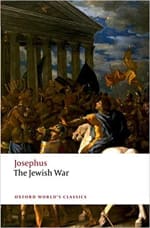

The earlier of his two major works of history, along with The Antiquities of the Jews (see #6 above), The Jewish War is Josephus’s account in seven books of the struggles of the Jews against the Romans from the Maccabean Revolt (167–160 BC) to the destruction of the Second Temple in 70 AD and the dramatic siege of Masada in 74. Josephus tells us that he originally composed this work “in his paternal tongue,” that is, Aramaic, or possibly Hebrew. However, this original version has been lost. The version of the text we have today is in Greek—entitled, in part, Historia Ioudaïkou polemou pros Rōmaious [History of the Jewish War against the Romans], but usually known simply as The Jewish War, for short. It is believed to represent an expansion of the Aramaic version that was most likely composed by Josephus himself. (For more on Josephus, as well as the standard eighteenth-century translation by William Whiston linked to here, see #2 above.)
9.A Little History of the World
By: Ernst H. Gombrich, 1935
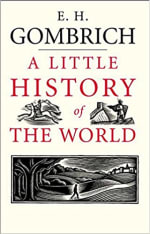

This compact volume was an effort to convey the basic facts of world history to an audience of young readers in a sprightly and accessible manner. Gombrich (1909–2001), who was Austrian-born and made his career as a distinguished art historian, emphasized the most personal and colorful aspects of the places and time periods covered in his book, which followed the full sweep of universal history from prehistoric times to the twentieth century. The book was originally published in Germany in 1935 as Eine kurze Weltgeschichte für junge Leser (A Short World History for Young Readers) and in Austria the following year as Weltgeschichte von der Urzeit bis zur Gegenwart (World History from Prehistory to the Present). The author was working on an English translation at the time of his death in 2001, at the age of 92. After his death, the translation was completed by one of his assistants and published in 2005.
10.The Making of the English Working Class
By: E.P. Thompson, 1963
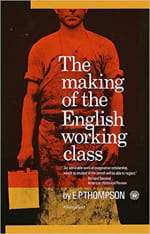

E.P. Thompson (1924–1993) was a distinguished social historian, as well as a Marxist political activist and British Communist Party member. This book, which is undoubtedly his most-influential work, is considered by many to be one of the last century’s outstanding contributions to historiography. The book details the social, economic, and intellectual developments over the course of the eighteenth and nineteenth centuries, which ultimately led to the formation of a self-conscious working class in England. One measure of the significance of the book is that it paved the way for innumerable similar studies; another is that academic studies of the book itself have grown into a cottage industry. In his later life, Thompson became more and more involved in political activism. During the 1980s, he became one of Britain’s most recognizable voices in opposition to nuclear weapons. Revised editions of his most important book were published in 1968 and in 1980.
11.A People’s History of the United States
By: Howard Zinn, 1980


Born into a working-class, German- and Russian-Jewish immigrant family in Brooklyn, Howard Zinn (1922–2010) got involved in labor organizing while working as a shipfitter at the New York Navy Yard at the age of 18. He was initially opposed to America’s entry into World War II, in line with the Communist Party line resulting from the Molotov-Ribbentrop Pact. Hitler, of course, violated the Pact by invading the USSR in June of 1941, so when America entered the war following Japan’s December 7 attack on Pearl Harbor, Zinn was free to join the fight against fascism with a clear conscience. He joined the Air Force and served as a bombardier, running bombing missions over German-occupied France, Czechoslovakia, Hungary, and eventually Germany itself. After the war, Zinn went to college on the GI Bill, eventually receiving his PhD in history from Columbia University in 1958. His first academic position was at Spelman College in Atlanta—a job from which he was fired in 1963 for radicalizing his students. He then found a post at Boston University, where he taught political science for 24 years, until his retirement in 1988. The book under consideration here is by far Zinn’s greatest claim to fame. It is essentially an American history told from the point of view of previously underrepresented groups, including women, black Americans, native Americans, and others. The book has been a spectacular publishing success, being required reading for innumerable high school and college students throughout the country over the past 40 years. It has been reprinted numerous times, most recently in 2017.
12.The Pope’s Jews: The Vatican’s Secret Plan to Save Jews from the Nazis
By: Gordon Thomas, 2012


In March of 1939, the Cardinal Secretary of State and Camerlengo of the Holy Roman Church, Eugenio Pacelli (1876–1958), was elected Pope, taking the name of Pius XII. Less than six months later, Adolf Hitler’s Wehrmacht invaded Poland and World War II was unleashed on the world. For decades now, the nature of Pius XII’s relations with the Fascist Italian state and—after Germany exerted direct control—with the Nazi authorities has been highly controversial. For some historians, his diplomatic maneuvering to maintain as much Vatican independence as possible, as well as his refusal to speak out against Fascist and Nazi atrocities, have been denounced as complicitous. For others—including the author of the present book—Pius XII ought to be recognized as a hero for clandestinely saving as many Jews as possible. The book under consideration presents a careful and detailed historical narrative in support of the latter interpretation. This book thus counters the thesis advanced by the book ranked at #19 on our list (see below).
13.Lies My Teacher Told Me: Everything Your American History Textbook Got Wrong
By: James W. Loewen, 1995


This book looks at some dozen traditional (pre-1995) high school history textbooks, which painted US history in glowing colors in an effort to inspire patriotism in young people. The author shows in detail how many such books are misleading or outright mistaken in many respects by the standards of works written by and for professional historians. Loewer goes on to charge that, in addition to downplaying the sufferings of Native Americans, African slaves, and others, such textbooks are also bland and overly simplistic, failing to explain the historical context within which the historical figures they discuss acted. This book has been very successful and was republished in 2008 and 2018.
14.Histories
By: Herodotus, c. 430 BC
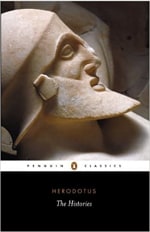

The original Greek title of this book is Historiae, which literally means “inquiries.” It is the source of the word “history” and its cognates in all modern languages, including English. Born into the Greek community of Halicarnassus in Asia Minor, then under Persian rule, Herodotus (c. 484–c. 425 BC) was above all a captivating storyteller. Thus, this book has also contributed to our understanding of “history” as a dramatic narrative. The Histories covers events in the following cultural areas: Persia, Asia Minor, Greece, Egypt, Scythia, and Thrace. While Herodotus had not yet entirely freed himself from dependence on mythology and legend, his book remains our most reliable (or only) source for many of the historical facts presented there within. Perhaps more importantly, he is the first ancient Greek writer to conceive of the Greeks and other groups in essentially modern terms of linguistic-based nationality or ethnicity (previous Greek chronologies had focused on individual city-states and noble families). Numerous English translations are in existence, including a Landmark edition in 2009.
15.The Origins of the Second World War
By: A.J.P. Taylor, 1961
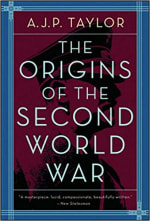

Taylor (1906–1990) was a distinguished British historian who specialized in German diplomacy. His 1961 book, The Origins of the Second World War, was a bombshell lobbed into the postwar historical consensus. That consensus had been designed to absolve the German people of all moral responsibility for the horrors of the war and the atrocity of the Holocaust by claiming they were hoodwinked by Hitler and the Nazi regime into a war they did not support. Taylor argued convincingly that, on the contrary, the German population’s anger at the anti-German terms to the Treaty of Versailles ending World War I was the engine driving public support for Hitler’s campaign to remilitarize Germany and for his expansionist foreign policy. Taylor also advanced several other revisionist theses, including the claim that Hitler had no grand vision of how to accomplish his war aims, but rather took advantage opportunistically of French and British diplomatic mistakes. This book has been reprinted in numerous later editions.
16.Spring and Autumn Annals
By: Anonymus, Fifth century BC


Known in Chinese (in the official pinyin transliteration system) as the Chunqiu, Spring and Autumn Annals is in fact a generic name for several different early Chinese chronicles. The book discussed here is the earliest such text, covering the territory of the state of Lu during the years 722–481 BC. Lu was a vassal state of the Zhou dynasty located in what is now Shandong Province on the Yellow Sea. Spring and Autumn Annals is a year-by-year record of significant public events and striking occurrences in Lu, including battles, natural disasters, celestial phenomena, sacrificial rituals, and the accessions, marriages, deaths, and funerals of rulers. It is the earliest Chinese historical text arranged in the popular annals format. Its tremendous prestige rests in large part on the traditional belief that it was compiled by Kong Fuzi—better known in English as Confucius (551–479 BC)—and in part on the detailed commentaries it attracted by other scholars over the centuries, especially the highly prized Commentary of Zuo (Zuo Zhuan). As such, the Chunqiu is honored as one of the “Five Classics” of Confucian culture. The Chunqiu (together with the Zuo Zhuan) was first translated into English in 1872 by the prolific Scottish Sinologist, missionary, and first professor of Chinese at Oxford University, James Legge (1815–1897). This translation has been reprinted numerous times. (Note that Legge’s translation is written in his own transliteration system, not in pinyin.)
17.The Hemingses of Monticello: An American Family
By: Annette Gordon-Reed, 2008


This book is the definitive account of the evidence supporting the existence of a sexual relationship between Thomas Jefferson (1743–1826), third President of the US (1801–1809), and his African American slave, Sally Hemings (c. 1773–1835). The author organizes the book as a dual history of two families, the Jeffersons and the Hemingses, tracing Hemings’s ancestors back several generations. Her well-known conclusion is that Jefferson was certainly the father of at least six of Hemings’s children, of whom four survived into adulthood and had families of their own. The dramatic highpoint of the book comes during Jefferson’s time as US Ambassador in Paris (1787–1789). Hemings accompanied her master to France, but as France no longer recognized slavery, once on French soil she was free. However, she agreed to return with Jefferson to Virginia and slavery, provided that he grant freedom to Hemings and her entire family in his will—which Jefferson did. This path-breaking book is both a serious work of historical scholarship and a skillful narrative which is quite accessible to the general reader.
18.The Gallic War
By: Julius Caesar, c. 49 BC
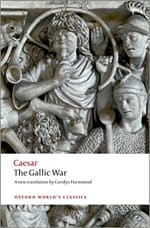

Julius Caesar is believed to have written up the histories of his military campaigns some time during the decade between 59 and 49 BC. The present history, originally titled Commentarii de bello gallico (Commentaries on the Gallic War), recounts the military campaigns that culminated in his conquest of Gaul (that is, France). Caesar’s elegant but terse and unadorned style made the book suitable as a Latin primer, and for many generations its opening line—“Gallia est omnis divisa in partes tres” (“All Gaul is divided into three parts”)—was immediately recognizable to schoolchildren of all the major European countries. On this Landmark edition, see #5 above.
19.Hitler’s Pope: The Secret History of Pius XII
By: John Cornwell, 1999
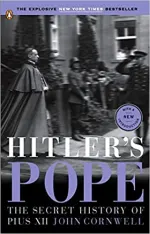

This book advances the thesis that during World War II, Pope Pius XII’s policy of cooperation with the Italian Fascist and Nazi authorities—ostensibly in order to preserve, to the extent possible, the independence of the Roman Catholic Church—resulted in the deportation and murder of many more Italian Jews than would otherwise have been the case. The author’s basic thesis is that the Pope’s anti-communist leanings caused him to be sympathetic to the aims of Fascism and National Socialism. He also speculates that if Pius XII had denounced Hitler, German Catholics might have resisted the Nazi regime—thus making the Pope responsible for the entire Holocaust. This book provoked a firestorm of criticism upon its release in 1999. It was re-released in 2008 with a new Introduction in which the author replied to his critics. This book has been countered by the book ranked #12 on the present list (see above).
20.A Study of History
Volume 1: Abridgement of Volumes I–VI
Volume 2: Abridgement of Volumes VII–X
By: Arnold J. Toynbee, 1934–1961


Toynbee (1889–1975) set out to write a history of the world more comprehensive than any single author had ever done before him. His overarching thesis was that the key to understanding world history lies in identifying the major “civilizations” whose rise, clashes, decline, and fall have driven the great demographic upheavals and technological revolutions at the global scale throughout the ages. The main historical text was published in 10 volumes, as follows: volumes 1–3 in 1934; volumes 4–6 in 1939; and volumes 7–10 in 1954. A Historical Atlas and Gazeteer was published in 1959 as volume 11, and a final volume entitled Reconsiderations was published in 1961 as volume 12. A two-volume abridgment of the 10 main chapters was published by D.C. Somervell in 1946 and 1957, respectively. These were combined by Somervell into a one-volume edition in 1960.
21.The Spanish War
By: Anonymus, c. 40 BC
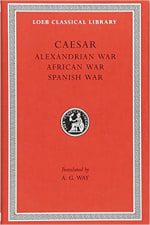

This book—called De bello hispaniensi in the original Latin—recounts Julius Caesar’s campaign in southern Spain culminating in the Battle of Munda (in modern Andalusia) in 45 BC. The campaign recounted by this text was the last episode in the Roman civil war between Caesar’s armed forces and those still loyal to the late Pompey. Thus, it should not be confused with earlier Roman campaigns of conquest waged against the original inhabitants of the Iberian Peninsula. The author of this text is unknown, but its highly disorderly state prompted the great historian Thomas Babington Macaulay (1800–1859) to quip that it must have been written by some “sturdy old centurion who fought better than he wrote.” The emphasis in the text on cavalry engagements has led to speculation that the author may have been an officer of Caesar’s mounted regiments. On the civil war, as well as the Landmark edition to which this translation belongs, see the books discussed under #5 and #18 above.
22.The Deeds of the Hungarians (II)
By: Simon of Kéza, c. 1285 AD


Simon of Kéza (in Hungarian, Kézai Simon) was a scholar working at the court of King Ladislaus IV of Hungary during the second half of the thirteenth century. He composed the work in Latin under the title of Gesta Hunnorum et Hungarorum (The Deeds of the Huns and the Hungarians). It is also known to modern scholars as the Gesta Hungarorum (II) because it incorporates material from an anonymous earlier text of the same name written around 1200. The work begins with an assortment of semi-legendary material recounting the life of Attila the Hun (c. 406–453 AD), before embarking on a narrative of the “deeds” (gesta) of the Hungarian, or Magyar, tribes which invaded and conquered the Carpathian basin during the ninth and tenth centuries. There then follows a more conventional chronicle of the Kingdom of Hungary up until Simon’s own time. Note that we now know there was no connection between the two ethnic groups, the Huns most likely being a Turkic people, while the Hungarians are related to the Finnish, Estonian, and Samoyed peoples. This text was first published as a printed book in 1782 in Buda (then a separate city from Pest). It was first translated into English in 1999 in the edition linked to above.
23.Nihongi: Chronicles of Japan from the Earliest Times to A.D. 697, Volume I
Nihongi: Chronicles of Japan from the Earliest Times to A.D. 697, Volume I
Nihongi: Chronicles of Japan from the Earliest Times to A.D. 697, Volume II
By: Ō no Yasumaro, 720 AD


Nihongi (often translated “Japanese Chronicles”) is one of the earliest historical chronicles of Japan, beginning in a mythical time of gods and monsters and proceeding up until the late Yamato period (as indicated in the English version’s subtitle). The text, also known as Nihon Shoki (“Early Japan”), was written in a combination of Chinese (often used by early Japanese scholars) and literary Japanese. The authorship is uncertain, but traditionally it has been ascribed to the Nara period nobleman Ō no Yasumaro, who is also held to be the author of the earlier mythologizing chronicle, Kojiki (“Account of Ancient Matters”). Ō no Yasumaro is also believed to have been assisted in his work on the Nihongi by Prince Toneri, son of the Nara emperor Tenmu. This text was translated into English in 1896 by the British scholar and diplomat, William George Aston (1841–1911). His version is the primary translation of the Nihongi still in use today. It has been reprinted several times over the years, most recently in 2013.
24.Comprehensive Mirror in Aid of Governance
By: Sima Guang, 1084 AD
Emperor Huan and Emperor Ling: Being the Chronicle of Later Han 157–189
To Establish Peace: Being the Chronicle of Later Han for the Years 189 to 220 AD, Rafe de Crespigny, translator
The Chronicle of the Three Kingdoms, 220–265, Achilles Fang, translator
Zizhi tongjian: Warring States and Qin, Joseph P. Yap, translator
Wars with the Xiongnu: A Translation from Zizhi Tongjian, Joseph P. Yap, translator
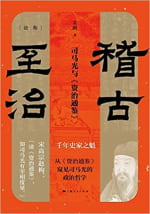

The Comprehensive Mirror in Aid of Governance is a monumental, universal history of China stretching from the first Zhou dynasty through the later Zhou (1046 BC to 960 AD). (Since the Chinese character for “mirror” can also mean “reflection,” a more accurate translation of the title would be “Comprehensive Reflections in Aid of Governance.“) Divided into 294 juan, or scrolls (translated as “volumes” or “chapters”), the Zizhi Tongjian may be the longest single-author world history ever produced by any culture. The author, Sima Guang (1019–1086 AD), was a scholar who worked for the Song dynasty emperor Yingzong. With this work, he acquired a towering reputation as perhaps the greatest historian in Chinese history. If later reports may be believed, he was a child prodigy who at the age of six was able to summarize an erudite historical lecture he once overheard. Three different scholars have so far translated selections from this vast work into English: Rafe de Crespigny, two volumes covering six chapters and 11 chapters, respectively; Andrew Fang, one volume covering 10 chapters; and Joseph P. Yap, two volumes, one covering eight chapters and another comprising selections from several chapters pertaining to warfare with the mysterious Xiongnu people of the Eurasian steppe. (See the links provided above.)
25.An Introduction to the Study of Indian History
By: Damodar Dharmananda Kosambi, 1956


Kosambi (1907–1966) was born in what was then the Portuguese colony of Goa (now Goa State), along the western (Arabian Sea) coast of India, into a rural, Konkani-speaking, Gaud Saraswat Brahmin (GSB) family. His father, Dharmananda Damodar Kosambi (1876–1947), was a distinguished Pali scholar and historian of Buddhism. Kosambi fils was a highly gifted polymath who made significant contributions to mathematics (the Kosambi map function, the Kosambi-Karhunen-Loève theorem) and genetics, as well as historiography. So far as his work in the latter field is concerned, Kosambi approached society and history from a Marxist perspective, though he was never a doctrinaire communist and always adhered scrupulously to scholarly standards of impartiality and objective evidence. Unlike the other great world civilizations of Mesopotamia, Egypt, and China, India did not produce written records from early times. Therefore, early Indian history has had to be reconstructed by other means. In his classic work, Introduction to the Study of Indian History, Kosambi pioneered the application of the methods of archaeology and ethnography to the problem of reconstructing the prehistory of the Indian subcontinent. The work thus represents a methodological breakthrough, as well as the first modern, scientifically based account of Indian history roughly from the Indus Valley civilization in the fourth century BC until the first pan-Indian empire, that of the Mauryans, which lasted from 321 BC until 185 BC. Kosambi does arrange his masterpiece into an overarching chronological narrative, but the main emphasis throughout is placed social and technological developments.
***Now that you know what books to check out, consider a deep dive with a look at The Best Colleges & Universities for a Bachelor’s in History.
Get more study tips, learning tools, and study starters with a look out our Complete Library of Study Guides.
Or jump to our student resource library for tips on everything from studying to starting on your career path.